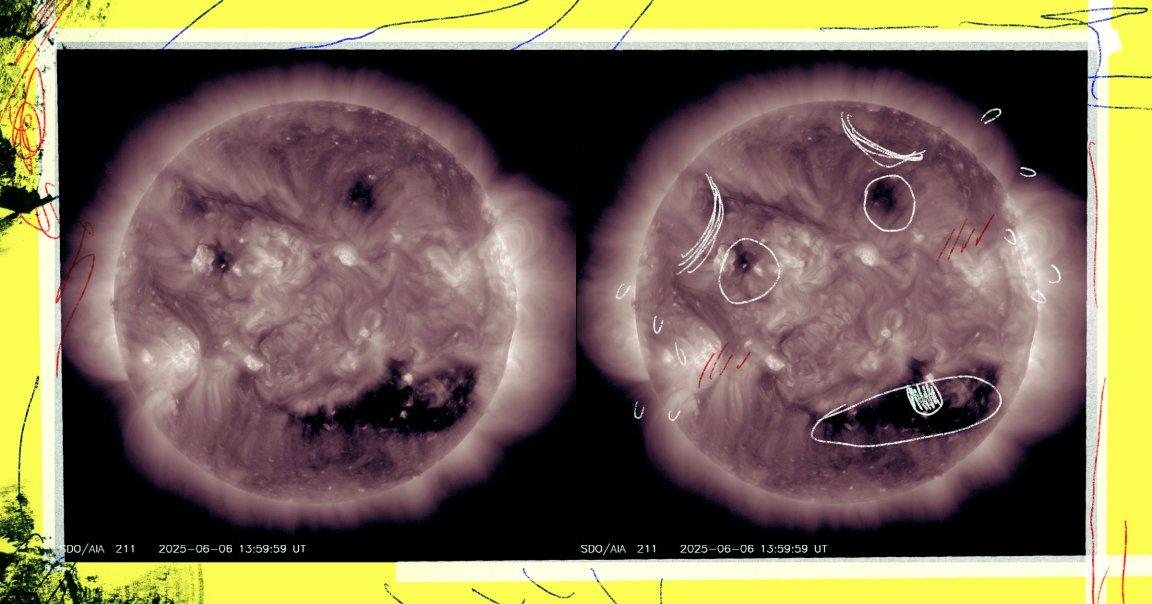
If you look just right, the Sun appears to be opening its mouth and laughing at us. (We can’t imagine why.)
As ScienceAlert reports, this colossal gash forming the mouth is what’s known as “coronal hole,” which occurs when the star’s magnetic field opens up and allows a gust of charged solar wind to rush out, leaving the area it just left much cooler and giving it that gaping look. As for the eyes, those are smaller sunspots to the hole’s north, giving this solar face a look of surprise.
When looking at the Sun from Earth — which we recommend only doing with special glasses or instruments, by the way — you won’t notice its wide grin unless viewing it on the ultraviolet (UV) spectrum. From that wavelength, a different picture emerges: one with a wide, open mouth that laughs at our little lives back on terra firma.
A fairly regular occurrence, coronal holes like this one can cause strong geomagnetic activity and even the kind of “storms” that send out bursts of charged particles towards Earth, often resulting in beautiful auroras or communication systems failures. Space weather reports indicate that this latest coronal hole is indeed causing such a storm, though it’s unclear whether any tech glitches will follow in its wake.
The images we’re seeing of the Sun’s cheeky grin don’t do justice to just how huge it is. As ScienceAlert notes, this coronal hole is as wide as five Jupiters lined up side-by-side, which would put it at about 434,000 miles across.
Interestingly, this is not the first time a five-Jupiter-width geomagnetic chasm has opened up to form a creepy grin on the Sun.
Almost exactly 18 months ago — not long before the so-called “solar maximum,” or period when the Sun’s geomagnetic activity is at its peak, in October 2024 — a slightly more devilish smile was seen on our star as it blew out its ultracharged breath towards Earth.
In that instance, as in this one, the geomagnetic storm associated with the coronal hole wasn’t all that strong, resulting in little more than glittering auroras and a bit of social media panic.
More on the Sun: New Imaging Technique Makes the Sun Look Like a Swirling Pink Liquid